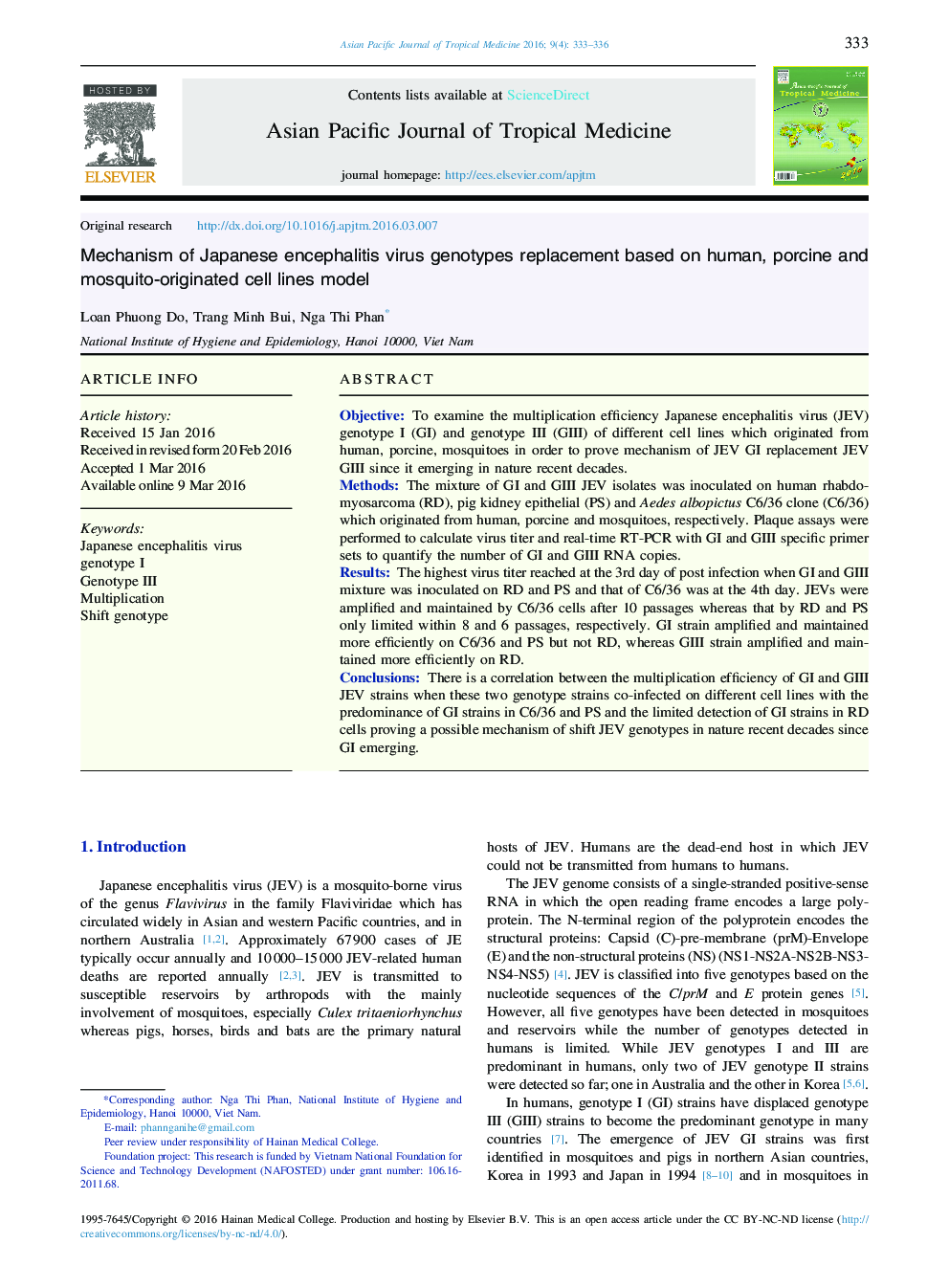| کد مقاله | کد نشریه | سال انتشار | مقاله انگلیسی | نسخه تمام متن |
|---|---|---|---|---|
| 3455325 | 1596005 | 2016 | 4 صفحه PDF | دانلود رایگان |
ObjectiveTo examine the multiplication efficiency Japanese encephalitis virus (JEV) genotype I (GI) and genotype III (GIII) of different cell lines which originated from human, porcine, mosquitoes in order to prove mechanism of JEV GI replacement JEV GIII since it emerging in nature recent decades.MethodsThe mixture of GI and GIII JEV isolates was inoculated on human rhabdomyosarcoma (RD), pig kidney epithelial (PS) and Aedes albopictus C6/36 clone (C6/36) which originated from human, porcine and mosquitoes, respectively. Plaque assays were performed to calculate virus titer and real-time RT-PCR with GI and GIII specific primer sets to quantify the number of GI and GIII RNA copies.ResultsThe highest virus titer reached at the 3rd day of post infection when GI and GIII mixture was inoculated on RD and PS and that of C6/36 was at the 4th day. JEVs were amplified and maintained by C6/36 cells after 10 passages whereas that by RD and PS only limited within 8 and 6 passages, respectively. GI strain amplified and maintained more efficiently on C6/36 and PS but not RD, whereas GIII strain amplified and maintained more efficiently on RD.ConclusionsThere is a correlation between the multiplication efficiency of GI and GIII JEV strains when these two genotype strains co-infected on different cell lines with the predominance of GI strains in C6/36 and PS and the limited detection of GI strains in RD cells proving a possible mechanism of shift JEV genotypes in nature recent decades since GI emerging.
Journal: Asian Pacific Journal of Tropical Medicine - Volume 9, Issue 4, April 2016, Pages 333–336
